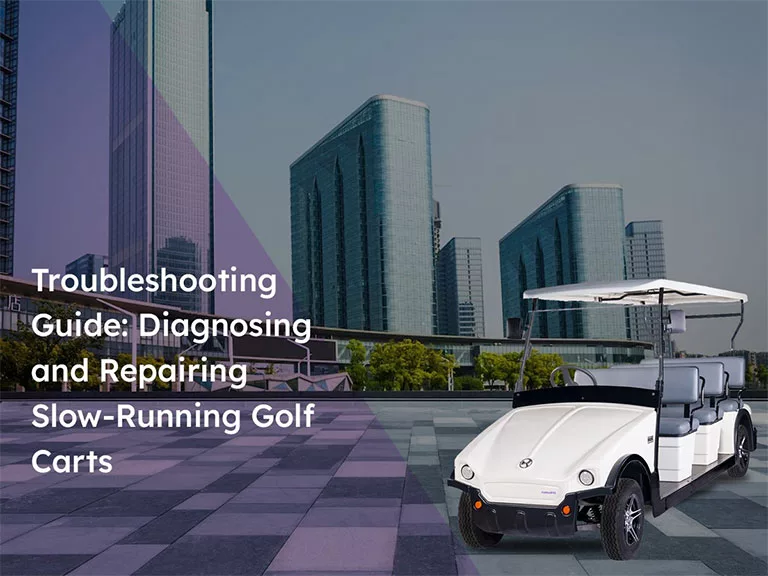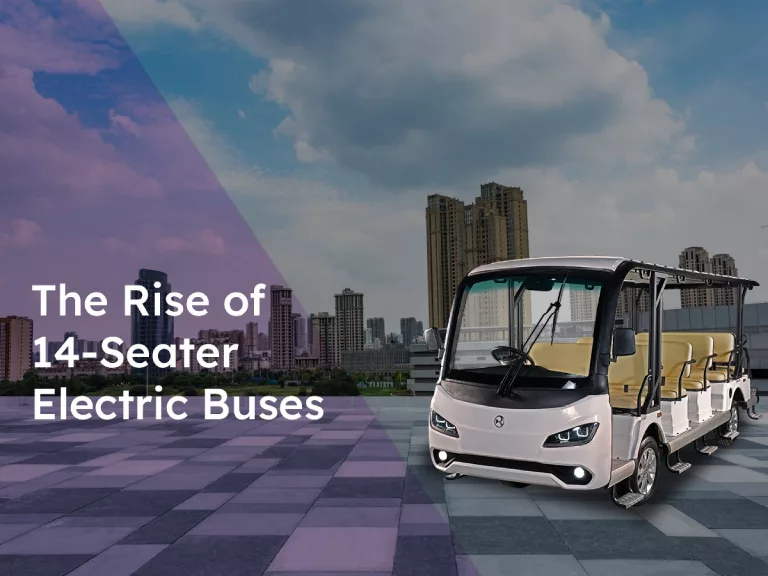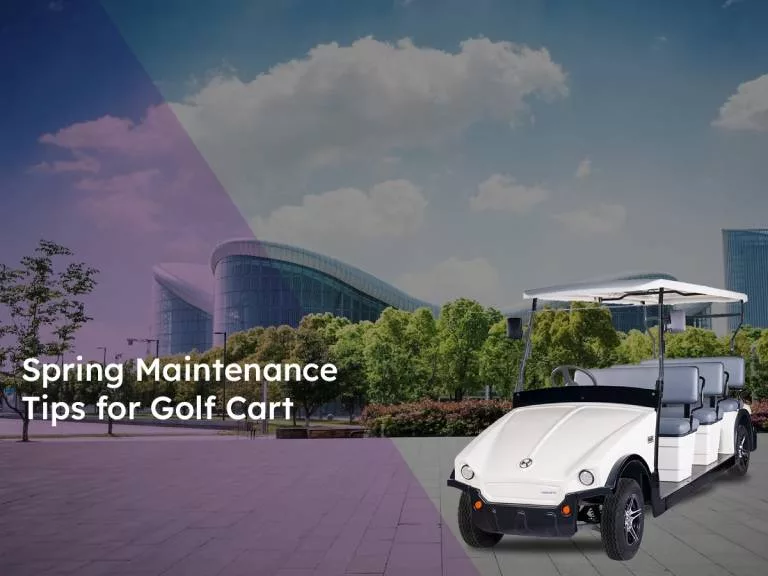Golf carts are indispensable vehicles for navigating the property like temples, IT Parks, which provides efficient transportation. However, the frustration of a golf cart moving at a slow pace can significantly impact the overall experience. In this detailed golf cart troubleshooting guide, we will explore common issues that cause slow-running golf carts and provide practical solutions to rejuvenate their speed and efficiency, ensuring an optimal experience on the greens.
1. Check Battery Voltage
The heartbeat of an electric golf cart lies in its battery, and a common reason for poor performance is low battery voltage. To initiate troubleshooting, employ a voltmeter to measure the battery voltage, aiming for a healthy reading between 36 to 48 volts. A deviation from this range signals a need for action – recharge or replace the batteries promptly to ensure a robust power source.
2.Inspect Battery Connections
Poor battery connections can significantly contribute to diminished performance. Carefully examine the battery terminals for signs of corrosion. A thorough cleaning of the terminals with a wire brush and ensuring a snug fit are paramount. Tighten any loose connections diligently to facilitate optimal power transfer, addressing a fundamental aspect of the golf cart’s functionality.

3.Evaluate Tire Pressure
Tire pressure is a crucial factor affecting the speed and efficiency of a golf cart . An often overlooked yet impactful issue, low tire pressure increases rolling resistance, hindering overall performance. Regularly check and inflate tires on all four wheels to the recommended levels. Properly inflated tires reduce resistance and contribute to an efficient and swift ride across the course.
4. Examine Brake System
A smoothly functioning brake system is not only vital for safety but also directly influences the cart’s speed. A malfunctioning brake system introduces unnecessary friction, hindering the cart’s pace. Inspect the brakes for signs of wear and tear, replacing brake pads if necessary. Ensure proper adjustment of brake cables to prevent dragging, maintaining a responsive and efficient braking system.
5.Assess Motor and Controller
The motor and controller constitute the powerhouse of the electric golf cart. A meticulous inspection of the motor for signs of damage or overheating is imperative. Concurrently, scrutinize the controller for loose wires or burnt components, both of which can compromise performance. If any issues are detected, seeking professional advice for repairs or replacements is essential to ensure the cart’s sustained optimal performance.
6. Review Solenoid Functionality
The solenoid serves as the electrical conductor that engages the cart’s motor. Testing its functionality is crucial. Listen for a distinct click when the accelerator pedal is pressed; the absence of this click may indicate a faulty solenoid. Prompt replacement is advised to restore seamless engagement of the motor and maintain the cart’s intended speed.
7.Evaluate Throttle Sensor
The throttle sensor is integral to precise speed control, and a malfunctioning sensor can lead to erratic performance. Test the throttle sensor by observing the cart’s acceleration and deceleration. Any delays or inconsistencies in response suggest a potential issue. Consider replacing the throttle sensor to restore accurate speed control and overall functionality.
8. Inspect Wheel Bearings
Wheel bearings, though often overlooked, play a pivotal role in the golf cart’s performance. Worn-out bearings increase friction, leading to a reduction in speed. To address this, jack up each wheel and meticulously check for play in the bearings. Timely replacement of any damaged or worn bearings ensures smooth wheel rotation and contributes to enhanced overall performance.
9. Examine Axle and Differential
The axle and differential are critical components affecting power distribution and overall performance. A visual inspection for signs of damage or leakage is paramount. A damaged axle or differential can result in uneven power distribution, significantly impacting the golf cart’s speed. Addressing any issues promptly is crucial to prevent further damage and ensure sustained optimal performance.
10. Consider Upgrading Components
If, despite thorough troubleshooting, the electric golf cart remains sluggish, consider upgrading specific components. High-performance batteries, controllers, and motors tailored to various golf cart models are available, providing a substantial boost in speed and efficiency. Upgrading components can be a strategic investment to ensure the cart meets evolving performance expectations on the golf course.
Conclusion:
A slow-running golf cart can be a source of frustration for both players and staff. However, with systematic golf cart troubleshooting, it is possible to identify and resolve underlying issues. Regular maintenance, coupled with prompt repairs and, if necessary, component upgrades, not only restores the cart’s speed but also extends its lifespan. By following this comprehensive guide, golf enthusiasts can confidently navigate the greens, enjoying a smooth and efficient transportation experience on their golf carts. The meticulous attention to each aspect of golf cart troubleshooting ensures a thorough approach to problem-solving, guaranteeing an optimal electric golf cart experience for all.




